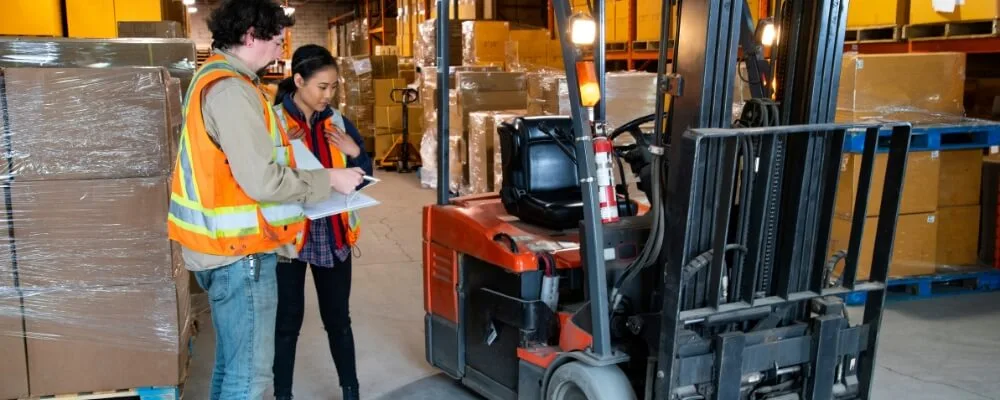In today’s fast-paced work environment, ensuring safety isn’t just a responsibility—it’s an imperative. As businesses evolve, so do the challenges and nuances of maintaining a secure workspace. But how can we transform safety from a checklist to an ingrained part of our daily routine? The answer lies in cultivating robust safety habits.
Once embedded, these habits protect employees from potential hazards and foster a culture where safety becomes second nature to every individual. In this blog, we delve into 10 tips that will guide you in building and strengthening workplace safety habits, ensuring a healthier, safer, and more productive environment for all. Dive in and discover the path to a more secure workspace!
What are Safety Habits?
Safety habits refer to the consistent and automatic behaviors or practices that individuals adopt to prevent harm or injury to themselves and others. These habits are cultivated over time through repetition, awareness, and understanding of the importance of following certain procedures or taking precautions in specific situations. They become ingrained in an individual’s routine, ensuring that safety measures are not overlooked or forgotten, even without immediate supervision or reminders.

Importance of Safety Habits
In essence, safety habits are foundational to creating environments where people can function at their best, free from potential harm or injury concerns. They act proactively, ensuring immediate and long-term risks are mitigated.

10 Key Tips for Building Workplace Safety Habits
Building safety habits in the workplace is essential for reducing the risk of accidents and ensuring a conducive work environment. Here are 10 key tips to cultivate these habits:
1. Safety Education & Training
Investing in the education and training of employees is one of the most effective ways to ensure workplace safety. This isn’t just about a one-off orientation but involves ongoing learning processes. As the work environment evolves, new equipment is introduced, or processes change, the associated risks might shift. Thus, continuous training sessions tailored to employees’ specific roles are essential.
For example, a warehouse operator might need to know the intricacies of operating a forklift safely, while an office worker might benefit more from ergonomic training, including insights into lighting ergonomics to reduce eye strain and enhance comfort. By targeting the training to potential hazards specific to their job, you ensure that each employee is equipped with the knowledge to protect themselves and their colleagues.
2. Daily Safety Briefings
The power of repetition cannot be overstated when instilling safety habits. Starting each day or shift with a brief safety reminder refreshes everyone’s memory about best practices. It might be as simple as reminding employees during the winter to watch for icy spots in the parking lot or a quick recap of the proper procedure to shut down a particular machine. These daily reminders keep safety guidelines top-of-mind and demonstrate the company’s commitment to ensuring everyone’s well-being.
3. Use of Signage
A well-placed sign can be a crucial last-minute reminder that prevents an accident. Whether it’s a sign indicating the need to wear protective goggles ahead or one that denotes a high-noise area, these visual cues serve as immediate reminders in the work environment.
They reinforce training and daily briefings and ensure that even if an employee momentarily forgets a safety protocol, the signage around them provides a safety net. Clear signs are also useful for visitors or new employees who might not yet be familiar with all the workplace’s safety protocols.
4. Regular Safety Drills
It’s one thing to know what to do in an emergency and another to act correctly under pressure. This is where safety drills come into play. By simulating potential emergencies, like fires or electrical failures, and practicing the response, employees become more conditioned to act quickly and appropriately when faced with a real crisis.
For instance, knowing the evacuation route on paper differs from physically walking it multiple times until it becomes second nature.

5. Wear Proper Personal Protective Equipment (PPE)
Personal Protective Equipment acts as the final barrier against potential hazards. Even with the best training and the clearest signs, accidents can happen. The right PPE can mean the difference between a close call and a severe injury.
For construction workers, a hard hat might protect them from falling debris. In contrast, safety glasses in a lab can prevent chemical splashes from reaching the eyes. Ensuring that workers have access to appropriate PPE and that they consistently use it safeguards them from the unpredictable aspects of their jobs.
6. Incorporate Technology
In our digitally driven world, technology offers myriad solutions to amplify safety measures in the workplace. Safety apps or software can be invaluable tools. They can send timely reminders to employees about specific protocols, help report potential hazards in real-time, or even offer on-the-spot training through interactive videos and modules.
For instance, a mobile app could allow a worker to instantly report a spill, triggering a rapid response that prevents slips and falls. Another application might use augmented reality to offer a virtual guide on safely operating a new machine. By harnessing technology, companies can ensure that safety protocols adapt to the times and remain effective and responsive.
7. Encourage Reporting
An environment where employees actively participate in safety by reporting potential risks is crucial. Such reporting isn’t about pointing fingers but is a proactive step toward preventing incidents. Unfortunately, many employees might hold back from reporting minor near misses or major hazards due to fear of blame or retaliation.
Organizations must actively foster a culture where reporting is seen as a responsibility and a contribution to the collective well-being. By ensuring confidentiality and acting on these reports; companies show employees that their voice matters and that safety is a shared responsibility.
8. Reward Safe Behavior
Just as humans respond to consequences, they also respond well to rewards. Recognizing employees who adhere to safety protocols bolsters their commitment and sets a positive example for others. This could be in the form of monthly safety awards, public recognition, or even tangible rewards.
Moreover, employees who go above and beyond by suggesting improvements or innovations in safety should be celebrated. By doing so, organizations turn safety from a mandated protocol into an engaging, rewarding endeavor.

9. Regular Safety Audits
Complacency can be a silent enemy in workplace safety. Over time, established routines might hide latent risks. Regular safety audits are a proactive way to identify these hidden hazards. While scheduled checks ensure a consistent safety baseline, surprise audits can offer a clearer picture of day-to-day safety practices.
These audits might reveal equipment that needs maintenance, areas in the facility prone to congestion, or practices that have deviated from the set protocols. By continuously monitoring and assessing, companies can anticipate and mitigate risks before they culminate in accidents.
10. Foster a Safety Culture
The ethos of any organization trickles down from its leadership. When the top echelons of management visibly prioritize safety, it sends a clear message to every employee: Safety isn’t just a protocol; it’s a value. This goes beyond memos and mandates. It could mean leaders participating in safety drills, attending safety training, or even walking the factory floor in the appropriate
PPE. Involving employees in safety committees empowers them, making them stakeholders in their safety. Listening to their concerns and feedback humanizes the process, ensuring that safety is not a top-down directive but a collaborative commitment. Ultimately, when safety becomes intertwined with a company’s culture, it evolves from a task to a habit, a norm, and an integral part of its identity.
Conclusion
In conclusion, building workplace safety habits is not just about adhering to rules or meeting compliance standards—it’s about fostering an environment where everyone feels protected, valued, and empowered. By integrating these 10 key tips into your organizational culture, you’re safeguarding the present and investing in your workforce’s future well-being.
Remember, a safe workplace reflects a company’s commitment to its people, and by prioritizing these habits, we pave the way for increased productivity, morale, and overall success. So, let’s not view safety as a mere obligation but as an integral part of our daily operations, ensuring that each day is productive and secure. Safety, after all, is a shared responsibility, starting with building the right habits.

